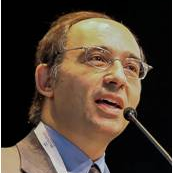Plasma-Based Surface Engineering
A special issue of Micromachines (ISSN 2072-666X). This special issue belongs to the section "D:Materials and Processing".
Deadline for manuscript submissions: closed (30 April 2018) | Viewed by 35751
Special Issue Editors
Interests: functional and “smart” materials; applications of nanotechnology in food science; wetting control and superhydrophobicity and applications in food science; novel diagnostic tools for food safety and quality monitoring
Special Issues, Collections and Topics in MDPI journals
Interests: plasma etching; surface modification; superhydrophobicity; wetting; lab-on-a-chip
Interests: mutliscale modeling and simulation; plasma processing; microfluidic devices; lab on a chip systems
Special Issues, Collections and Topics in MDPI journals
Special Issue Information
Surface engineering is important for many applications, such as superhydrophobicity/superamphiphobicity, self-cleaning, anti-fogging, anti-icing, and antibacterial action. Engineering of such surfaces requires structuring at the micro and nano-scale or coatings with micro and/or nano-features and surface energy control. Plasma processing is already used for various surface treatments, yet new functionalities, which impose new requirements for surface engineering, are sought. In this Special Issue, we aim to collect all the recent achievements in plasma fabricated surfaces and their applications. We also aim to address durability and other performance issues, as well as modeling and design issues, towards a new generation of plasma-based functional surfaces. Additionally, we want to present the perspectives and challenges in the field. Contributions are expected to expand the field of application for the plasma-based surfaces.
Dr. Kosmas Ellinas
Prof. Evangelos Gogolides
Dr. George Kokkoris
Guest Editors
Manuscript Submission Information
Manuscripts should be submitted online at www.mdpi.com by registering and logging in to this website. Once you are registered, click here to go to the submission form. Manuscripts can be submitted until the deadline. All submissions that pass pre-check are peer-reviewed. Accepted papers will be published continuously in the journal (as soon as accepted) and will be listed together on the special issue website. Research articles, review articles as well as short communications are invited. For planned papers, a title and short abstract (about 100 words) can be sent to the Editorial Office for announcement on this website.
Submitted manuscripts should not have been published previously, nor be under consideration for publication elsewhere (except conference proceedings papers). All manuscripts are thoroughly refereed through a single-blind peer-review process. A guide for authors and other relevant information for submission of manuscripts is available on the Instructions for Authors page. Micromachines is an international peer-reviewed open access monthly journal published by MDPI.
Please visit the Instructions for Authors page before submitting a manuscript. The Article Processing Charge (APC) for publication in this open access journal is 2600 CHF (Swiss Francs). Submitted papers should be well formatted and use good English. Authors may use MDPI's English editing service prior to publication or during author revisions.
Keywords
- Plasma deposition
- Plasma modification
- Plasma etching
- Wetting control
- Biomolecule adhesion control
- Superhydrophobicity








